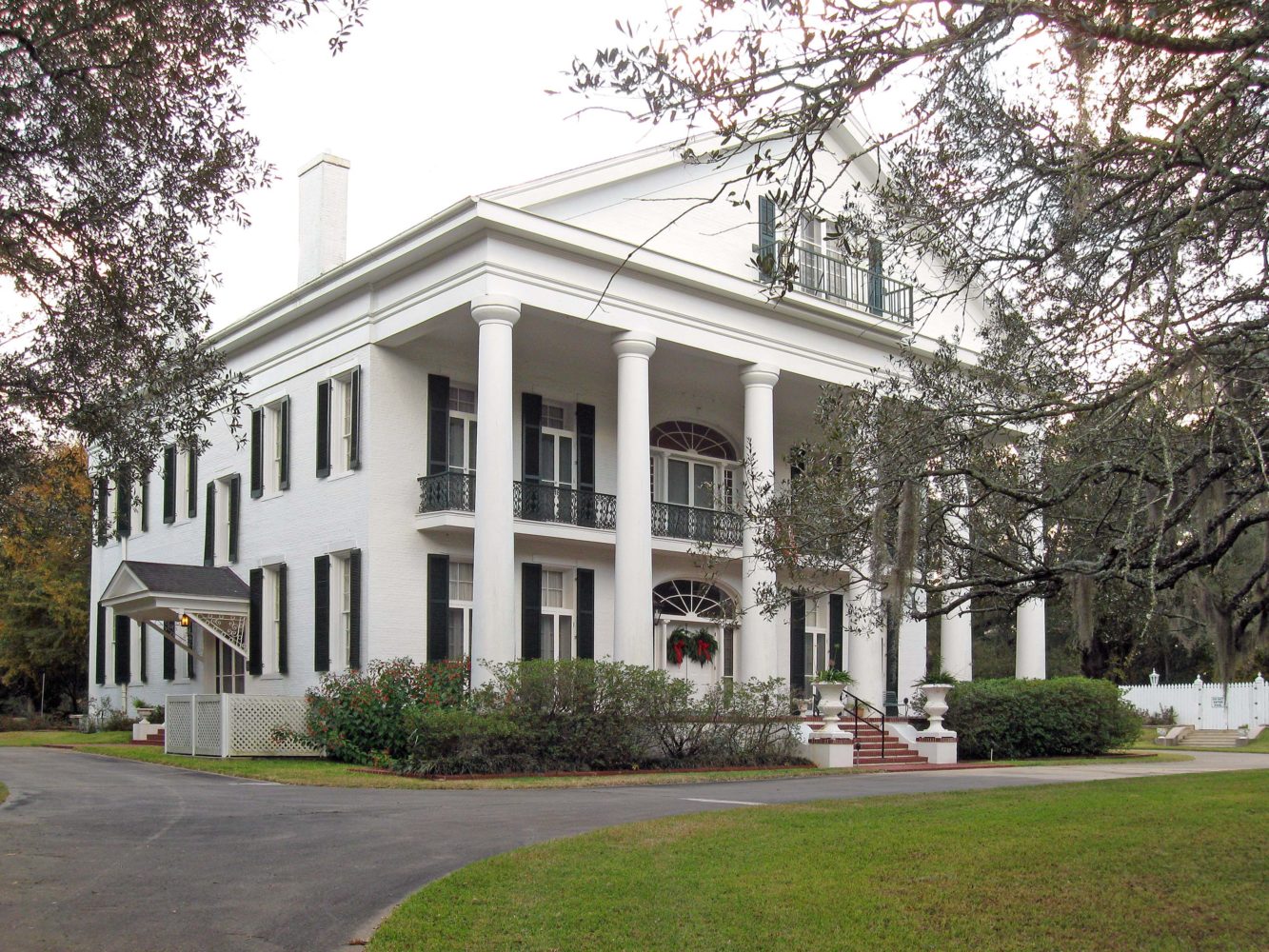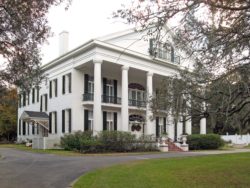Oaklawn Manor Plantation
Oaklawn Manor, on Bayou Teche, was originally owned by Irish-born lawyer Alexander Porter whose ancestry gave this area the name Irish Bend.

Courtesy of Wikimedia Commons
Oaklawn Manor. Phrangck15 (photographer)
Irish-born lawyer Alexander Porter traveled to Louisiana from Nashville in 1809 and started buying land along Bayou Teche. It was Porter’s Irish ancestry that gave this curved stretch of the Teche the name Irish Bend. After Porter had served on the Louisiana Supreme Court and represented the state in the U.S. Senate, he retired to his Bayou Teche property and built his Greek Revival house near Franklin naming it Oaklawn Manor Plantation.
The white-stuccoed brick house has identical porticoes front and back, with six full-height Tuscan columns and a pediment ventilated by a small window. Both floors of the house are identical in plan, with two rooms on each side of a central hall and a staircase set into a side hall. A ballroom was located on the third floor. An inventory of 1848 records that the plantation then possessed a sawmill, a sugar mill, 320 enslaved people, 80 workhorses and mules, and 160 head of sheep. A set of etchings reproduced in Frank Leslie’s Illustrated Newspaper (February 6, 1864) depicts the house, the slave quarters, sugar mills and sawmills, the church, and other buildings on the plantation, none of which have survived, although a brick dairy structure remains.
After the Civil War and a succession of owners, the house was increasingly neglected, and an interior fire caused considerable damage. In 1925, paddleboat owner Clyde Barbour purchased and restored the house; it was renovated in the 1960s by owner George Thompson. In 1986, Murphy “Mike” Foster, who was elected governor of Louisiana in 1995, and his wife Alice Foster, purchased the house and undertook another restoration. Of the plantation’s original service buildings, only the separate kitchen and the brick butter house survive. The house is open for tours.
Adapted from Karen Kingsley’s Buildings of Louisiana, part of the Buildings of the United States series commissioned by the Society of Architectural Historians (www.sah.org) and published by Oxford University Press.
